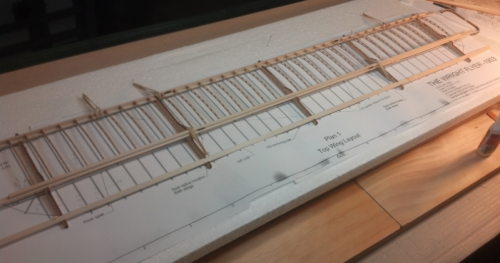How can I use takt time in computing labor cost?
Sometimes the searches that lead here give us interesting questions.
While simple on the surface, this question takes us in all kinds of interesting directions.
Actually the simplest answer is this: You can’t. Not from takt time alone.
Takt Time
Takt time is an expression of your customer’s requirement, leveled over the time you are producing the product or service. It says nothing about your ability to meet that requirement, nor does it say anything about the people, space or equipment required to do it.
Cycle Time
Cycle time comes in many flavors, but ultimately it tells you how much time – people time, equipment time, transportation time – is required for one unit of production.
Takt time and cycle time together can help you determine the required capacity to meet the customer’s demand, however they don’t give you the entire story.
In the simplest scenario, we have a leveled production line with nothing but manual operations (or the machine operations are trivially short compared to the takt time).
If I were to measure the time required for each person on the line to perform their work on one unit of the product or service and add them up, then I have the total work required. This should be close to the time it would take one person to do the job from beginning to end.
Let’s say it takes 360 minutes of work to assemble the product.
If the takt time says I need a unit of output every 36 minutes, then I can do some simple math.
How long do I have to complete the next unit? 36 minutes. (the takt time)
How long does it take to complete one full unit? 360 minutes (the total manual cycle time)
(How long does it take) / (How long do I have) = how many people you need
360 minutes of total cycle time / 36 minutes takt time = 10 people.
But this isn’t your labor cost because that assumes the work can be perfectly balanced, and everything goes perfectly smoothly. Show me a factory like that… anywhere. They don’t exist.
So you need a bit more.
Planned Cycle Time (a.k.a. Operational Takt Time and “Actual Takt”)
How much more? That requires really understanding the sources of variation in your process. The more variation there is, the more extra people (and other stuff) you will need to absorb it.
If we don’t know, we can start (for experimental purposes) by planning to run the line about 15% faster than the takt time. Now we get a new calculation.
85% of the takt time = 0.85 x 36 minutes = ~31 minutes. (I am rounding)
Now we re-calculate the people required with the new number:
360 minutes required / 31 minutes available = 11.6 people which rounds to 12 people.
Those two extra people are the cost of uncontrolled variation. You need them to ensure you actually complete the required number of units every day.
“But that cost is too high.”
Getting to Cost
12 people is the result of math, simple division that any 3rd grader can do. If you don’t like the answer, there are two possible solutions.
- Decide that 360 / 30 = something other than 11.6 (12). (or don’t do the math at all and just “decide” how many people are “appropriate” – perhaps based on some kind of load factor. This, in fact, is a pretty common approach. Unfortunately, it doesn’t work very well for some reason.
- Work to improve your process and reduce the cycle time or the variation.
Some people suggest slowing down the process, but this doesn’t change your labor cost per unit. It only alters your output. It still requires 360 minutes of work to do one unit of assembly (plus the variation). Actually, unless you slow down by an increment of the cycle time, it will increase your labor cost per unit because you have to round up to get the people you actually need, and/or work overtime to make up the production shortfall that the variation is causing.
So, realistically, we have to look at option #2 above.
This becomes a challenge – a reason to work on improving the process.
Really Getting to Cost
Challenge: We need to get this output with 10 people.
Now we have something we can work with. We can do some more simple math and determine a couple of levers we can pull.
We can reverse the equation and solve for the target cycle time:
10 people x 30 minute planned cycle time-per-unit = 300 minutes total cycle time.
Thus, if we can get the total cycle time down to 300 minutes from 360, then the math suggests we can do this with 10 people:
300 minutes required / 30 minutes planned cycle time = 10 people.
But maybe we can work on the variation as well. Remember, we added a 15% pad by reducing the customer takt time of 36 minutes to a planned cycle time (or operational takt time, same thing, different words) of 30 minutes. Question: What sources of instability can we reduce so we can use a planned cycle time of 33 minutes rather than 30?
Then (after we reduce the variation) we can slow down the process a bit, and we could get by with a smaller reduction in the total cycle time:
330 minutes required / 33 minutes planned cycle time = 10 people.
(See how this is different than just slowing it down? If you don’t do anything about the variation first, all you are doing is kicking in overtime or shorting production.)
So which way to go?
We don’t know.
First we need to really study the current process and understand why it takes 360 minutes, and where the variation is coming from. Likely some other alternatives will show themselves when we do that.
Then we can take that information, and establish an initial target condition, and get to work.
Summarizing:
- You can’t use takt time alone to determine your labor cost. Your labor cost per unit is driven by the total manual cycle time and the process variation.
- With that information, you can determine the total labor you need on the line with the takt time.
- None of this should be considered an unalterable given. Rather, it should be a starting point for meeting the challenge.
And finally, if you just use this to reduce your total headcount in your operation, you will, at best, only see a fraction of the “savings” show up on your bottom line. You need to take a holistic approach and use these tools to grow your business rather than cut your costs. That is, in reality, the only way they actually reach anywhere near their potential.
 Sometimes people fall into a trap of believing they understand a process if they can successfully predict it’s outcome. We see this in meetings. A problem or performance gap will be discussed, and an action item will be assigned to implement a solution.
Sometimes people fall into a trap of believing they understand a process if they can successfully predict it’s outcome. We see this in meetings. A problem or performance gap will be discussed, and an action item will be assigned to implement a solution.


